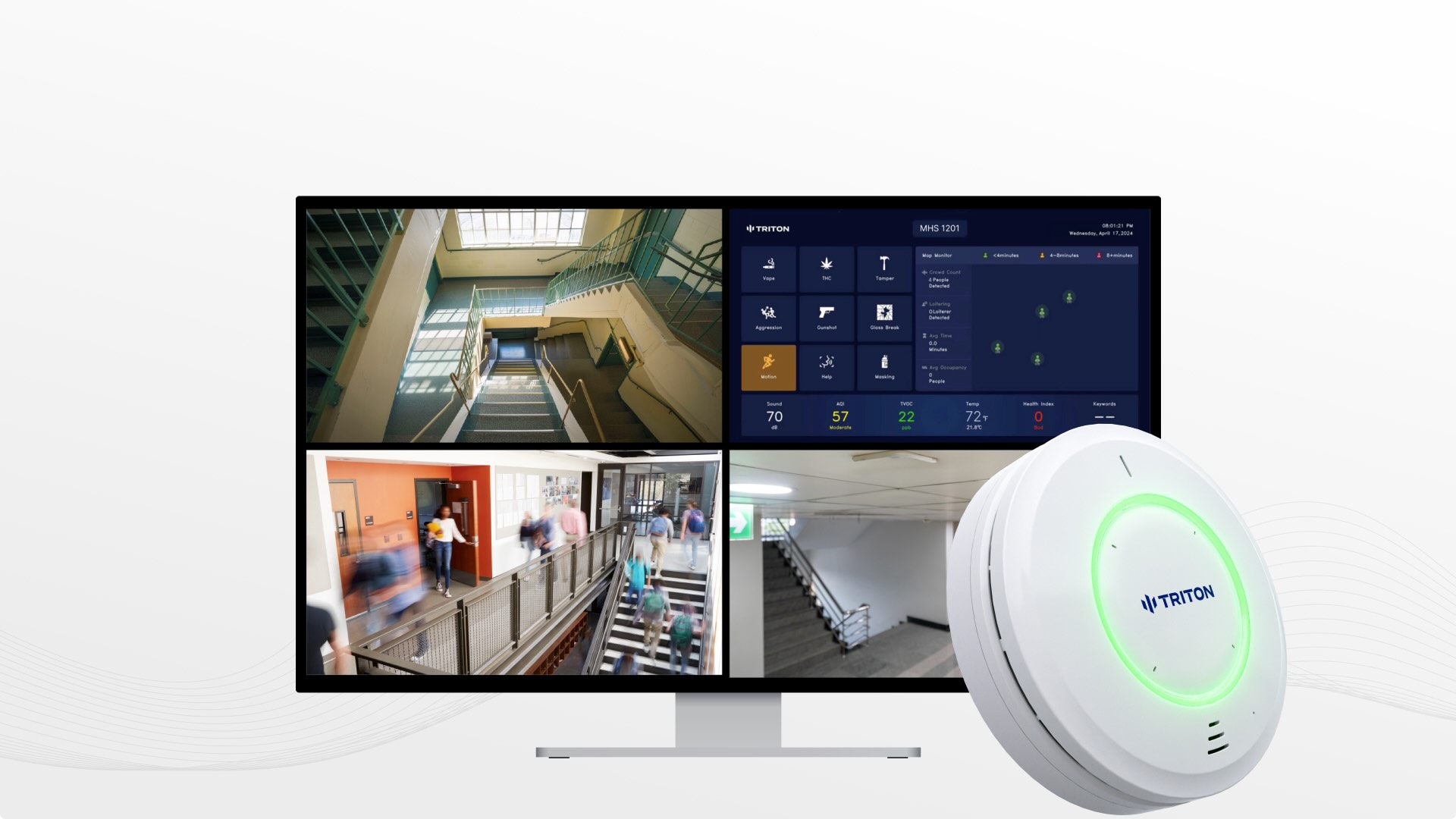Vape detectors, as opposed to traditional smoke detectors, are specially designed to identify unique substances and aerosols that are produced from e-cigarettes. These devices use the latest vape sensor technology to examine the air quality and detect chemicals like nicotine, THC and other harmful chemicals. The system will notify you instantly if vaping has been identified as a cause of the problem.

Image credit: tritonsensors.com
To address vaping in schools effectively, modern vape detectors are equipped with unique capabilities that go beyond traditional detection. Here are some features which make vape detectors indispensable in the fight against the vaping epidemic.
1. AI-Powered Substance Identification Using artificial intelligence, vape detectors are able to be able to learn and evolve over time. They can distinguish between harmless aerosols such as steam and hazardous substances such as nicotine or THC. This minimizes false alarms, and provides precise detection within school settings.
2. Customizable sensitivity settings : Schools can be of any size or shape, with a range of kinds of conditions. Vape detectors allow administrators to adjust the sensitivity in various areas such as restrooms, lockers and hallways.
3. Tamper Resistant Design: The vape detectors have sturdy materials as well with a tamper alarm system that guarantees consistent performance, even students attempt to remove the device or remove it. Administrators are immediately informed if the device is tampered with. This increases the security and reliability.
4. Behavioral Pattern Recognition: Modern vape detectors can do more than just detect vaping. They can also recognize patterns of behaviour, like regular gatherings in remote areas. This feature lets schools address problematic behaviors proactively and create a safer atmosphere.
5. Integration with School Communication Systems: Vape detectors with advanced technology are easily integrated into school communication systems, including messages apps or PA systems. This feature lets you send real-time notifications that are broadcasted to the appropriate staff members without disrupting the rest of the school community.
6. Energy-Efficient Operations: Designed for sustainability, the latest vape detectors require minimal power, which ensures long-term use without regular maintenance. This is especially beneficial in large schools, where numerous devices are required for a comprehensive coverage of the campus.
7. Odor Analysis for Enhanced Detection: Many vape detectors include odor analyses to detect scented electronic cigarette vapors that are difficult to detect. This can increase the range of detection and makes it possible to detect even the most inconspicuous vaping actions.
Vape detectors: Their role in schools
Vape detectors in schools go over and above detection. They’re an active way of creating a more concentrated and healthy learning environment.
Enhancing Student Safety
Vape detectors help reduce the exposure of harmful substances by detecting them in the early stages. This helps protect students from immediate and long risk to their health in the long term.
Promoting Accountability
Instant alerts help students be accountable for their behavior. They emphasize the need of adhering to school rules, and promote responsible behavior.
Aiding in prevention efforts
With detailed insights from the vape detectors, schools will better comprehend the extent of the issue and devise comprehensive strategies to prevent it. Parents can be involved in educating students about the dangers of vaping and support provided for the people suffering from addiction.
Vape Detection Technology and Its Effect
Vaping incidents have been reduced substantially in schools using advanced smoke detectors for smoking vapes. In Texas as an example, a Texas high school experienced a 75% reduction in reported cases following the installation of vape detectors in the restrooms and locker room. Vape detectors also were integrated into the safety protocols of a California school district. They saw improved student behavior as well as fewer disciplinary measures.
These stories of success illustrate the potential of technology to effect an impactful change in the classroom.
Making an Comprehensive Strategy Against Vaping
While vape detectors are powerful devices, they’re most effective when integrated with a wider strategy. Schools must:
1. Students should be educated Regularly talk about the dangers of vaping. Emphasize its potential health risks as well as any impact it could have on future work opportunities.
2. Engage Parents: Provide tools to help parents identify the signs of smoking and assist their children in making healthier choices.
3. Create a culture of open communication. Encourage students to talk about peer pressure and the use of vaping in a relaxed environment which prioritizes their health.
4. Collaboration with community partners: collaborate with local health agencies as well as law enforcement agencies to increase initiatives to stop smoking.
The Road to Safer Schools
Vape detectors, which are among the most advanced in the market and can aid in tackling this epidemic. These devices integrate real-time detection with monitoring of multiple substances and data-driven insights to assist schools to tackle the vaping epidemic while creating a healthier learning environment for students.
The battle against vaping will not end thanks to technology. To effectively address this issue the need for a holistic approach that incorporates parental involvement, education, and collaboration with the community is required. By leveraging these strategies and tools schools can help pave the way towards a healthier and safer future for their children.
Act now if your school is having trouble with the vaping crisis. Think about investing in smoke alarms for vapes and taking proactive measures to ensure your students are protected. We can purify the air and make sure that every student has the opportunity to thrive in a safe and supportive environment.